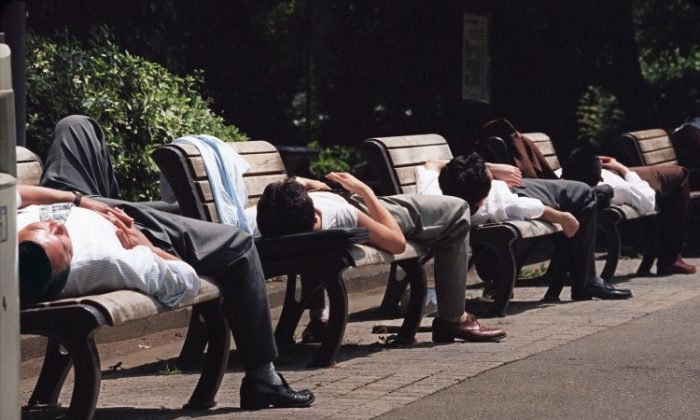Japanese people sleep during the day in the most diverse corners: squares benches, sidewalks, temples, meeting rooms. Some fall asleep even standing on the train.

Above all, it is a physiological issue. They doze in daylight because they sleep poorly at home. A government-sponsored study showed that four out of ten Japanese people sleep less than six hours a night. They are the people with the fewest hours of sleep, sometimes only surpassed by South Korea or Singapore, depending on the study. It is natural for them to feel sleepy later. Let’s know why Japanese people sleep on trains.
But there is also a cultural issue behind this. The Japanese applaud those who sleep later because they were studying or working. In the past, samurai were valued when they woke up in the middle of the night to study. And they also praise those who get up early.
So, if someone slaps in the middle of a meeting at the company because he has been working too hard, there is no problem. On the contrary, the person can even be promoted.
But, if you fished with your neck because you had a cold or spent the night at the club, then you will certainly be censored by colleagues or the boss.
The act of napping in public during the day even has a name: inemuri. The term means “sleeping in the presence of others”.
Who practices inemuri must follow some rules, among them the one of being compact. You cannot invade other people’s space, put your foot on the table, lie on the bench or make too much noise. No snoring, therefore.
You can’t prepare the place, either. You must fall asleep by surprise, as if you were fighting until the last minute against him. In business meetings, for example, just lower your head. If someone asks a question, sometimes you can even get up slowly and answer it.

Arlene Ross is a health blogger who enjoys writing on her website. Arlene has always had an interest in medicine, and she hopes to become a doctor one day. She loves reading about medical discoveries, especially when they are for rare conditions that don’t have much research yet. She also likes exploring the science behind different diets and nutrition programs.







